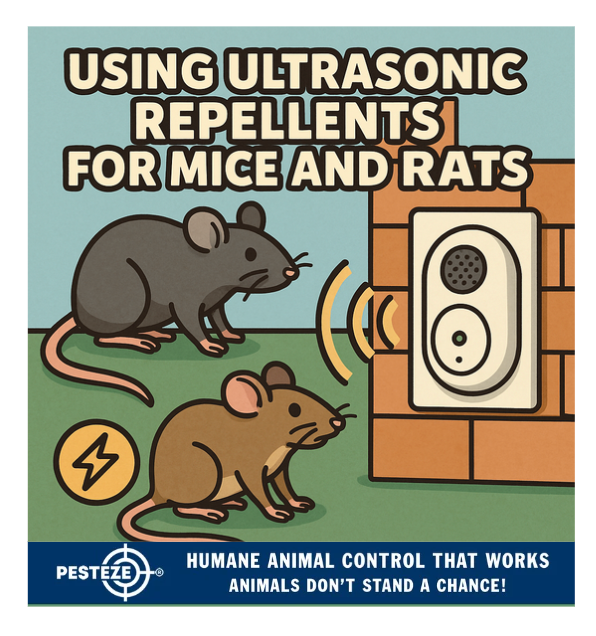USING ULTRASONIC REPELLENTS FOR MICE AND RATS

USING ULTRASONIC REPELLENTS FOR MICE AND RATS
SUMMARY
This guide explores how ultrasonic repellents work to deter mice and rats using high-frequency sound waves. Learn about their effectiveness, ideal placement, maintenance tips, and how to combine them with other humane rodent prevention methods for best results.
FEATURES
-
Sound-Based Deterrent: Uses inaudible ultrasonic waves to repel rodents.
-
Safe for Humans and Pets: Non-toxic and chemical-free solution.
-
Easy Installation: Plug into outlets near rodent-prone areas.
-
Coverage Range: Works best in enclosed spaces with minimal obstructions.
-
Low Maintenance: Requires periodic cleaning and occasional repositioning.
-
Complementary Use: Most effective when combined with sanitation and sealing efforts.
GUIDE DESCRIPTION
Ultrasonic repellents are a modern, humane way to keep mice and rats away without relying on traps or poisons. These small, plug-in devices emit high-frequency sound waves that are irritating to rodents but inaudible to humans and most pets. When used correctly, ultrasonic repellents can form an effective first line of defense against infestations in homes, offices, and storage spaces.
The key to their success lies in proper placement. Ultrasonic waves travel in straight lines and do not penetrate walls or furniture well, so each room requires its own unit for optimal coverage. Place the devices near known rodent entry points, behind appliances, or along walls where droppings or gnaw marks have been spotted. Avoid blocking the speakers with curtains, boxes, or furniture, as this will reduce their effectiveness.
Ultrasonic repellents work best as part of a comprehensive pest control plan. While the noise can disrupt rodents’ communication, navigation, and nesting behavior, the effects may diminish if they adapt to the constant sound. To prevent this, move the devices to new locations every few weeks or switch between models with slightly different frequency ranges. Some advanced units even feature variable frequencies or strobe lights to enhance their deterrent power.
Safety is one of the major advantages of ultrasonic repellents. Unlike traditional rodenticides, they do not use toxic chemicals or pose risks of secondary poisoning to pets or wildlife. However, users should note that certain small animals—like hamsters or gerbils—might be sensitive to ultrasonic frequencies and should be kept in unaffected areas. Cleaning the units regularly ensures dust does not block the speakers and maintains performance over time.
Although these devices can significantly reduce rodent activity, they are most effective when combined with other preventive actions. Seal cracks and entry points, store food in airtight containers, and maintain cleanliness to remove potential attractants. Ultrasonic repellents can then help ensure that no new intruders settle in after you’ve addressed the root causes of infestation.
In short, ultrasonic repellents offer a simple, humane, and maintenance-free addition to your pest prevention toolkit. When used correctly, they create an unwelcoming environment for rodents—helping protect your home and family in a safe, eco-friendly way.
- Saneeth Thota


Comments 0